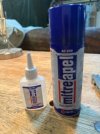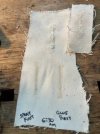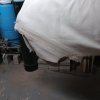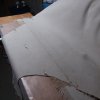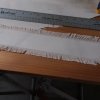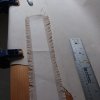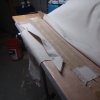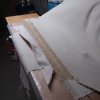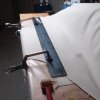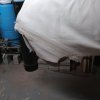I don't care if it looks good. I want a solid canoe. That's all I'm after now. So do you think sewing will hold up to the stretch?
From the perspective of a longtime canoeist who is not a perfectionist canoe maker, restorer or collector—but a simple user of canoes as simple tools for simple pleasures—your patch and sew philosophy makes sense to me, as long as it's tested for strength, which you seem to have done.
I realize there are some differences between the use of canvas on canoe hulls versus use as boat sails, but it would seem that sailors since the most ancient civilizations have used woven plant fibers for sails, and I suspect they all used sewed patches for inevitable small tears rather than wholly replacing entire sails. There are many current articles and YouTube videos about how to repair tears and sew patches on sails.
Many of my non-wood canoes have a variety of hull repairs: arc-welded Royalex tears, G-flexed repairs, fiberglass patches, micro-balloon fills, gel coat repairs, duct tape. We used to bash aluminum canoes back into shape with big rocks. These canoes will never go to a museum, but they've all functioned just fine after the repairs. If functional use is your goal, and if you don't care whether someone notices a repaired three-inch canvas gash upon close inspection, and if you don't want to spend the time or money on a new canvas, then go for it. You'll be in the company of hundreds of thousands of paddlers who have various blemishes or imperfections on their boat hulls.
Good luck with your project and planned trip.

